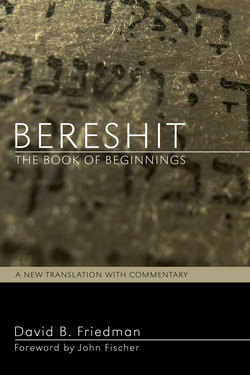Читать книгу Bereshit, The Book of Beginnings - David B. Friedman - Страница 6
На сайте Литреса книга снята с продажи.
Introduction
ОглавлениеI have endeavored to render this version true to the meaning of the Masoretic text while making an idiomatic and easily understandable translation into English. I attempted to take into account each and every word from the Masoretic text, however, not as a word-for-word translation. Instead, I focused upon a phrase-by-phrase, sentence-by-sentence understanding. Sometimes I chose to make a conceptual rendition as opposed to a stiff English translation of what is very idiomatic Hebrew. At times there is a very thin line between translation and interpretation. I have tried to explain some linguistic aspects of Bereshit in my notes. However, at times I found it necessary to interpret given verses through my translation (as all translations, in the end, do).
Centuries ago, the Jewish sage Rabbi Yishma’el emphasized that although the Torah (Bible) is written in human language, it transmits a Heavenly message. He spent his career in the second century teaching particular methods of understanding the Torah through his finely developed thirteen methods of interpretation. Today, as in Rabbi Yishma’el’s time period, translating and interpreting the Torah remains an immense challenge. Today’s Jewish and Christian world, and our translators of the scriptures, still deal with human languages and finite understanding while simultaneously transmitting Heavenly narratives, principles, and instruction. I certainly appreciate Rabbi Yishma’el’s grasp of the complexity of understanding the words of the Torah.
Throughout this translation, I put Hebrew names into English forms that preserve a likeness to the Hebrew name. Thus, I write “Avram” instead of “Abram,” “Yakov” instead of “Jacob.” The glossary at the end of this translation will list these relevant names. I did not use a Hebraicized form for the name “Isaac,” as it is difficult to pronounce for English speakers. I ignore it in lieu of the English name. I also kept “Joseph” intact, due to the popularity of this biblical figure in western culture, instead of using his Hebrew name. Most names found in the text’s chronologies have been given a phonetically based translation, so that the original Hebrew name is best preserved. As a result, some names may look strange to the reader, yet they do best reflect the original name as preserved in the Masoretic text.
In the end, individuals may translate the holy Torah, but it is up to our communities to relay its true meaning by the way in which we live out its messages.
Dr. David Friedman
Tishrei 5770 (September 2009)
Phoenix, AZ
Blessed are You, Lord our God, King of the Universe, Who has sanctified us by His commandments and commanded us to be busy studying the Torah.
“. . . the Torah (Bible) is fire, was given from the midst of fire, and may be compared to fire. What is the nature of fire? If a man comes too close to it, he gets burned. If he keeps too far from it, he gets cold. The only thing for him to do is to seek to warm himself before its flames.”
—from the Mekilta of Rabbi Yishma’el (a midrashic work on the book of Exodus).
